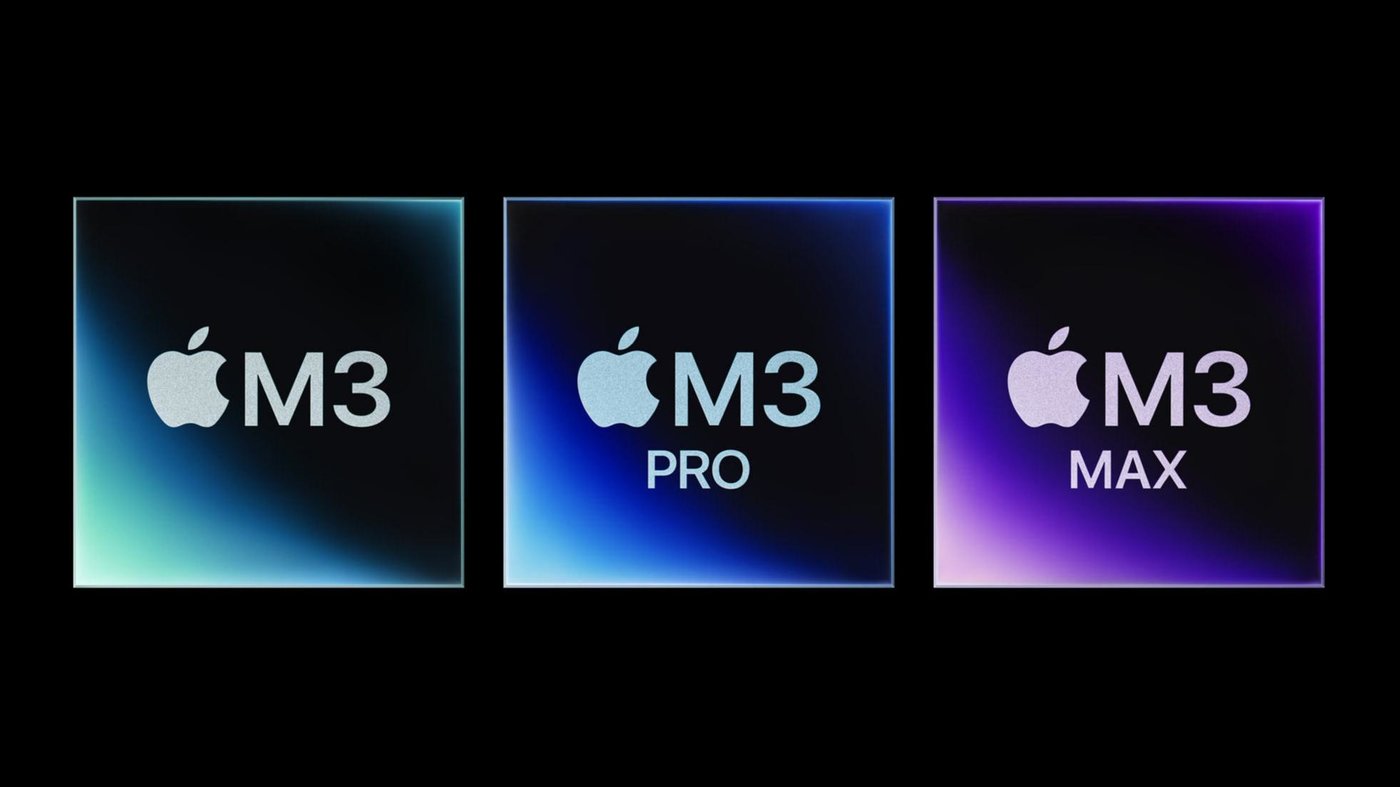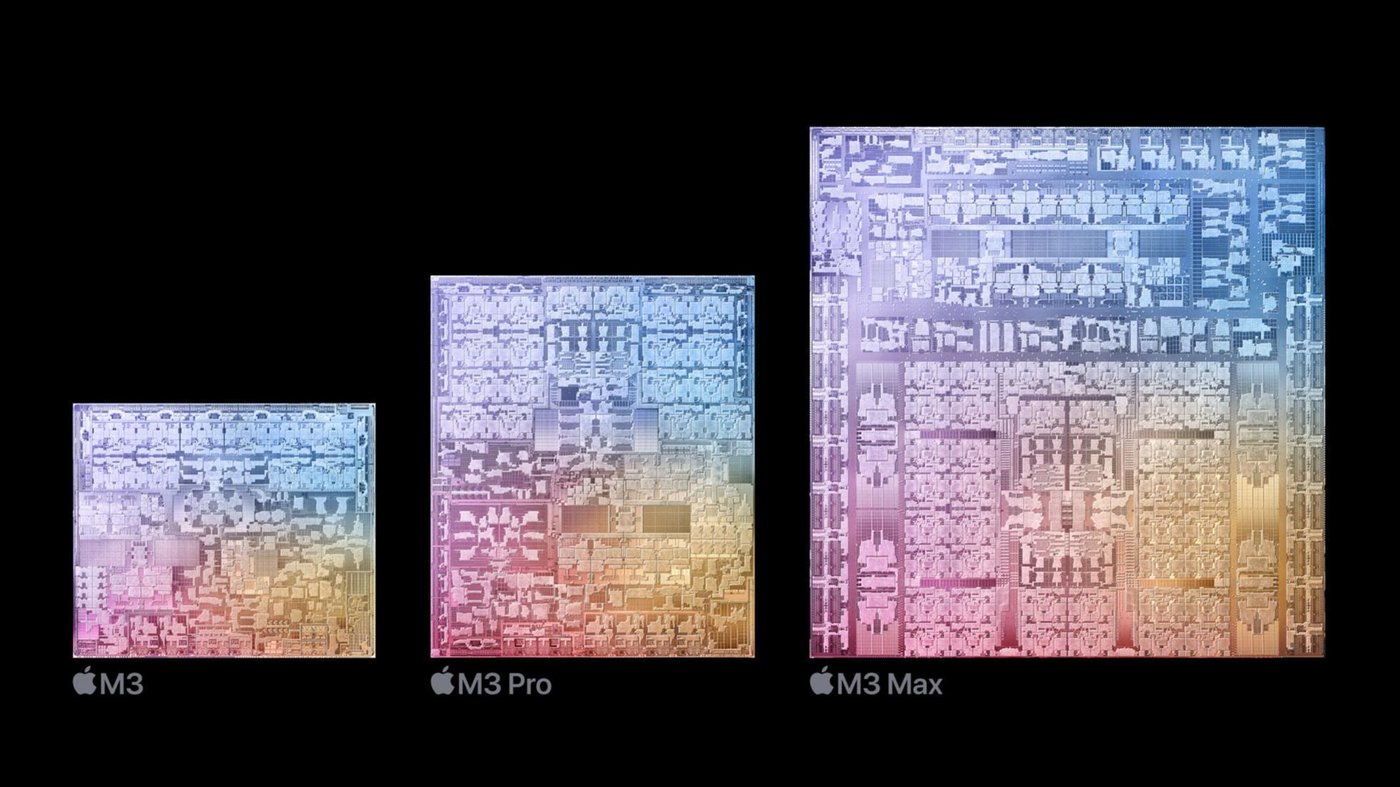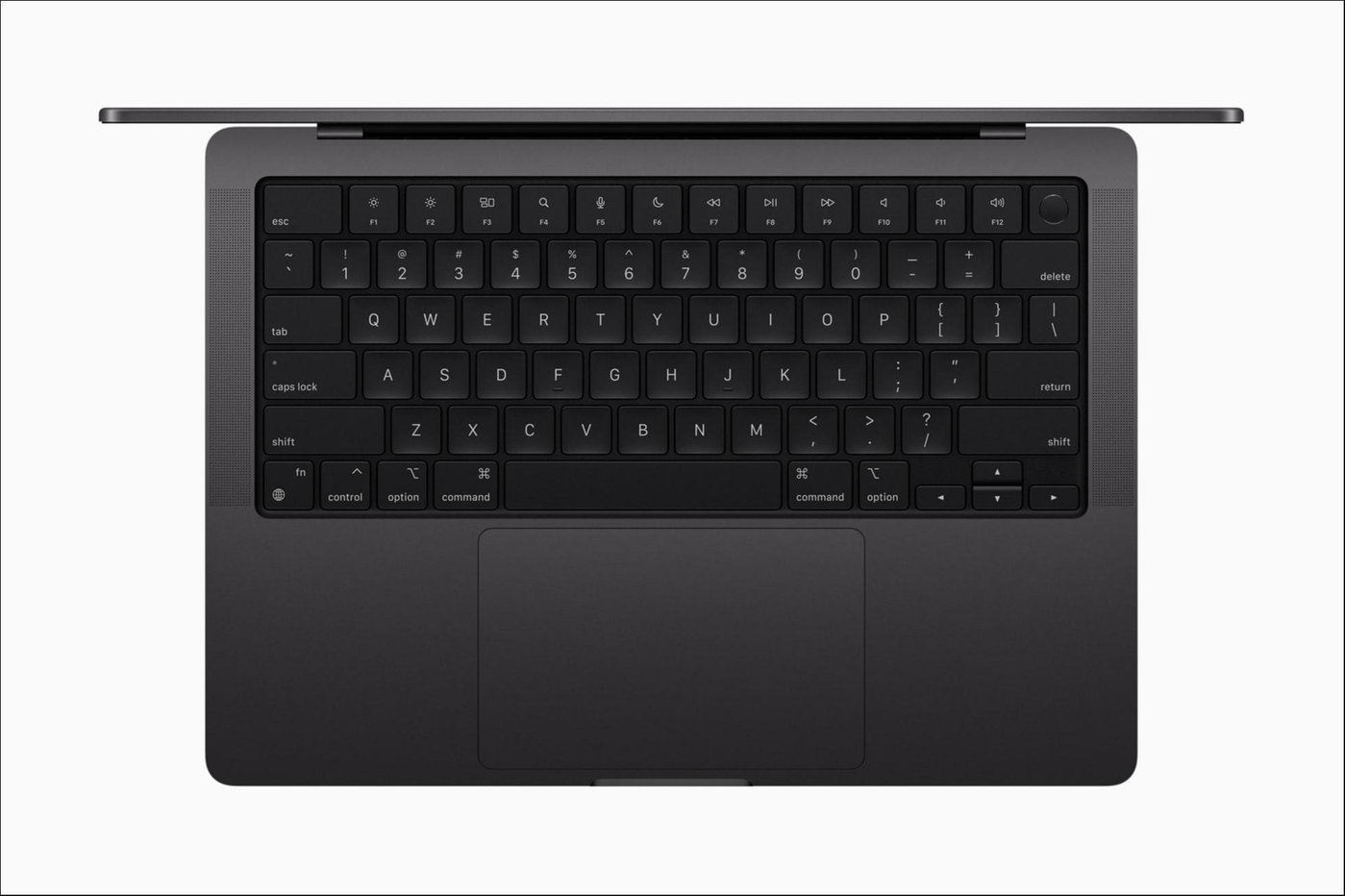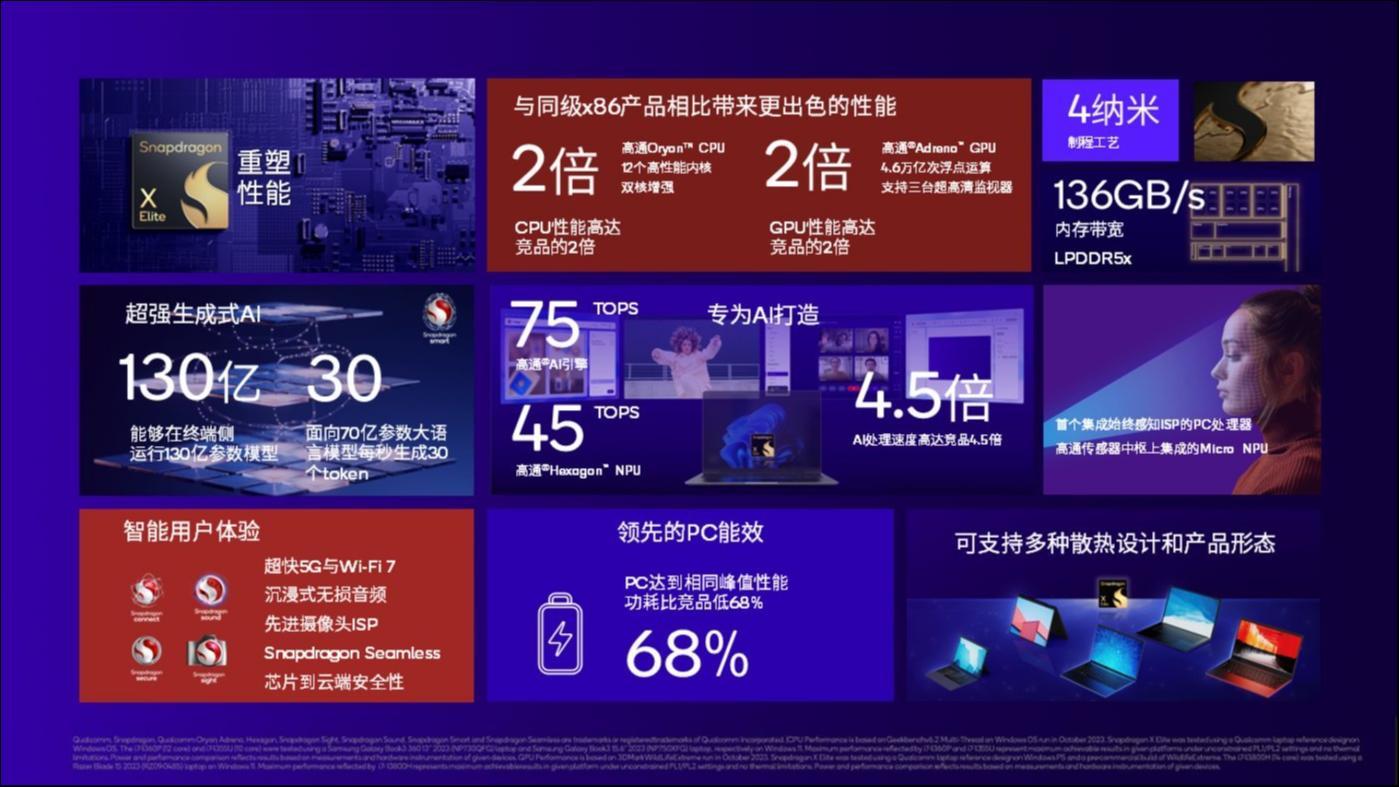Equipped with 3 nm M3 chip, Apple updated MacBook Pro and 24-inch iMac.

At 8: 00 am Beijing time on October 31, the second press conference in autumn was held as scheduled. In just 30 minutes, Apple released the latest products of the Mac series, including the MacBook Pro with M3 series chips and the 24-inch iMac.
Compared with the amazing experience when using M-series ARM architecture chips for the first time, today’s M3 chip MacBook is more like a routine update. Although everyone knows that the new product performs better in terms of computing power and energy consumption, it seems that there is no particularly eye-catching selling point that can make people feel the urge to buy immediately.
As predicted by the outside world, the update of Mac is more boring than that of iPhone 15, mainly due to the improvement of some performance indicators.
First of all, Apple released three M3 series chips, namely M3, M3 Pro and M3 Max, all of which adopt a 3-nanometer process and support a brand-new GPU architecture, grid shading, ray tracing and dynamic caching. According to Apple’s official test, its rendering speed can reach 2.5 times as fast as M1 series chips.

Among them, M3 chip is equipped with 8-core CPU, including 4 performance cores, 4 energy efficiency cores and 10-core GPU;. M3 Pro is equipped with 12-core CPU, including 6 performance cores, 6 energy efficiency cores and 18-core GPU;. M3 Max is equipped with 16-core CPU, including 12 performance cores, 4 energy efficiency cores and 40-core GPU.
According to Apple, M3′ s CPU high-performance core and energy-efficient core are 30% and 50% faster than those in M1, and the neural network engine is 60% faster than those on M1 series chips.
When the power consumption is halved, it can provide multithreading performance equivalent to M1, and it can achieve 35% performance improvement at peak power consumption. However, M3′ s GPU can achieve the same performance as M1 when the power consumption is halved, and the performance can be improved by 65% at peak power consumption.
In addition, the memory capacity supported by M3 chip can reach up to 128GB, and Apple said that AI developers can now run a larger Transformer model with billions of parameters. The enhanced neural network engine introduced can be used to accelerate the machine learning model.
Compared with M1 series chips, the new neural network engine can increase the speed by up to 60%, and the "scene editing detection" function in Adobe Premiere and the "smart matching" function in Final Cut Pro can be accelerated. In addition, M3 series chips also support the new version of the media processing engine, adding support for AV1 decoding, which can improve the energy efficiency and quality of this format video in play online.

On the product level, compared with the MacBook equipped with M1 and M2 series chips, the new MacBook did not change the mold, but only replaced the latest M3 chip and added a brand-new deep space black color scheme. Still equipped with Liquid retina XDR display, built-in 1080p camera and six-speaker audio system, the battery life can be up to 22 hours.
In terms of selling price, the starting price of the 14-inch MacBook has dropped from the original $1,699 to $1,599, and the entry product is equipped with 8GB of memory and 512GB of storage space. The starting price of the Bank of China is 12,999 yuan, and the starting price of the 16-inch MacBook Pro remains unchanged at $2,499, and the starting price of the Bank of China is 19,999 yuan.
In terms of home computers, Apple also updated the 24-inch iMac this time, all of which were replaced with M3 series chips, and no new color scheme was added. Equipped with a 24-inch 4.5K retina display, it supports more than 1 billion color displays, and integrates a camera, a speaker and a microphone. The price of the Bank of China starts at 10,999 yuan, but the basic model is only equipped with 8GB of memory and 256GB of storage space, which is a bit shabby.
There are indications that Apple’s update is more like a helpless move due to sluggish sales and competitive pressure. In the past three quarters, although Apple was still the fourth largest PC manufacturer in the world in terms of shipments, according to IDC data, its shipments decreased by 23.1% month-on-month, far greater than the 7.6% decline of the whole market.
Earlier, Guo Ming, an analyst at Tianfeng International Securities, pointed out that the demand for the new 15-inch MacBook Air released by Apple in June dropped sharply, and the shipment volume has dropped by about 20% or more this year. Since the back-to-school day, students’ demand for laptops has gradually decreased, which may be one of the reasons for the decline in sales of 15-inch MacBook Air.

On the other hand, during the Snapdragon Summit on October 25th, Qualcomm also launched a new Snapdragon X Elite for PC, which adopts the same ARM architecture as Apple’s M-series chips. Besides the traditional application track, Qualcomm also hopes to achieve "overtaking in corners" in the PC field by arranging AI in advance, which may be another reason for Apple to release a new generation of Macs.
It is understood that Snapdragon X Elite processor adopts 4nm process technology, and the CPU part is based on self-developed Oreon core, including 12 Oryon CPU cores with a main frequency of 3.8GHz, supporting dual-core turbo frequency to 4.3GHz, with a total cache of 42MB. According to the data released by Qualcomm, compared with Intel’s 12-core i7-1360P and 10-core i7-1355U processors, the CPU performance of Qualcomm Snapdragon X Elite is improved by 2 times, but the power consumption is reduced by 68%.
In terms of system optimization, Qualcomm’s ARM processor has also been helped by Microsoft. The latest Windows 11 description interface explicitly mentions the related contents of Windows based on ARM, including information on how to run Windows applications on ARM and development tools, which shows that Microsoft is promoting the compatibility of ARM processors at the system level. In addition, Qualcomm also emphasized the deployment of Snapdragon X Elite processor in AI, which was used in the chip war with Intel and Apple.
According to the latest test in geek bay, Snapdragon X Elite has been able to surpass the performance of M2 Max chip in some test items. It should be said that the power consumption performance of Snapdragon X Elite processor, Microsoft’s continuous optimization of ARM chips and the addition of AI have made Apple feel "unable to sit still".
Apple needs to recognize the fact that the entire PC industry is in a downturn compared with the glory when the M1 chip was released. Home office and online office caused by the epidemic have overdrawn most consumers’ demand for changing machines in a few years. There is no "big move" that makes people shine. No matter how brilliant Apple’s M3 chip is, I am afraid it is difficult to reverse the situation.(This article is the first titanium media App author/Wu Honglei editor/Zhong Yi)